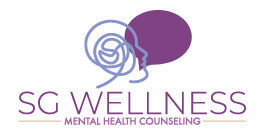 You wake up, scroll your phone, tell yourself you’ll “start later,” and somehow it’s 10 p.m. again. Maybe you’re between school and a career move, or you’re working a job that pays the bills but doesn’t feel like “you.” You want momentum—but you keep ending up in the same place. If you’re a young adult feeling stuck in a loop, you’re not alone. So many people in their late teens, 20s, and early 30s describe this season as a confusing blur of pressure, options, and second-guessing. The good news? Feeling stuck is a state, not a personality trait. With the right support and a few small shifts, you can create movement again—without bulldozing yourself with “shoulds.”
You wake up, scroll your phone, tell yourself you’ll “start later,” and somehow it’s 10 p.m. again. Maybe you’re between school and a career move, or you’re working a job that pays the bills but doesn’t feel like “you.” You want momentum—but you keep ending up in the same place. If you’re a young adult feeling stuck in a loop, you’re not alone. So many people in their late teens, 20s, and early 30s describe this season as a confusing blur of pressure, options, and second-guessing. The good news? Feeling stuck is a state, not a personality trait. With the right support and a few small shifts, you can create movement again—without bulldozing yourself with “shoulds.”
Below, we’ll walk through why you might be stuck, how to notice the patterns that keep you looping, and concrete steps to start moving forward—gently, sustainably, and in a way that feels like you.
Why You Might Feel Stuck (It’s More Common Than You Think)
- Overwhelm from too many choices. When everything is “possible,” it’s easy to pick nothing. The brain defaults to the familiar loop—even if the loop is uncomfortable—because it feels safer than choosing “wrong.”
- Perfectionism and fear of failure. If your brain says, “If it’s not the perfect choice, I’ll wait,” you’ll delay and plan forever. The loop thrives on all-or-nothing thinking.
- Comparison fatigue. Constant comparison to friends, siblings, or people online can make your own progress feel small. That discouragement feeds the loop.
- Executive function burnout. If you’re dealing with anxiety, ADHD traits, or chronic stress, organizing, prioritizing, and starting tasks can be heavy lifts. It’s not laziness; it’s capacity.
- Grief, identity shifts, or transitions. Graduating, moving, ending a relationship, or changing jobs can scramble your sense of self. Your system may pause to protect you.
Naming the reasons you feel stuck isn’t about blaming yourself. It’s about making sense of the loop so you can choose new cues and exits.
How to Spot Your “Loop”
Before we change anything, let’s observe the pattern with curiosity, not judgment.
-
Cue → Behavior → Result. What usually triggers the loop (cue)? What do you do next (behavior)? What happens after (result)?
Example: Anxiety about job searching (cue) → scrolling or cleaning (behavior) → temporary relief + guilt (result). -
Time & place. When and where does the loop happen most often? Evenings in your room? Weekends?
-
Hidden rules. Notice the “rules” your brain runs: “If I can’t do two hours, it’s pointless.” These rules quietly lock the loop in place.
Write this down for one week. No editing—just noticing. Awareness creates options.
Gentle Ways to Start Moving Again
This isn’t about “hustle harder.” It’s about building tiny, repeatable wins that your nervous system can trust.
1) Rename the Loop (And Shrink It)
Give your loop a simple name—“Avoidance Spiral” or “Perfectionism Pause.” Then pick one loop shrinker:
-
Two-Minute Start. Commit to only two minutes of the thing you’ve been avoiding (open the resume doc, send one email, draft three bullet points). Stopping after two minutes is allowed. Most brains keep going once the friction drops.
-
The 80% Rule. Call anything “done” at 80%. That last 20% is usually perfectionism chasing microscopic changes.
2) Choose “Tiny Experiments,” Not “Final Decisions”
When everything feels high-stakes, try 7-day experiments:
-
Test a new morning routine for one week.
-
Apply to three jobs that are “interesting enough,” not perfect.
-
Try a class, mutual aid volunteering, or a low-pressure networking event.
Experiments collect data. They reduce pressure and reveal what energizes you (and what doesn’t).
3) Anchor to Values, Not Just Goals
Goals can feel heavy if you’re unsure of the “right” path. Values give you direction without locking you in.
-
Pick 2–3 values for this season (e.g., learning, stability, community, creativity).
-
Ask: “What’s one 15-minute action today that aligns with this value?”
-
Learning → watch one tutorial and take notes
-
Community → text a friend to plan a walk
-
Stability → review monthly spending for 10 minutes
-
Values help you move even when clarity isn’t perfect yet.
4) Schedule Energy, Not Just Tasks
 Many young adults plan tasks without considering energy patterns. Try this:
Many young adults plan tasks without considering energy patterns. Try this:
-
Track energy for 7 days. When do you feel sharp vs. foggy?
-
Match tasks to energy. Put “hard brain” tasks in your high-energy zone; do admin during low energy.
-
Timebox with breaks. 25–50 minute focused blocks, then a 5–10 minute break (stretch, breathe, water).
5) Make Accountability Warm (Not Punishing)
Harsh accountability backfires. Try:
-
Body-doubling. Work on video with a friend, cameras on or off. Start by stating one tiny goal each.
-
“Sent it” buddy. Text a friend a photo of the single task you completed. They reply with a 🎉. Keep it light.
6) Design Your Environment for Movement
Small changes can interrupt big loops.
-
Keep your laptop on your desk (not your bed).
-
Put your phone in another room for your first 30 minutes of the day.
-
Prep a “friction-free” start: open the doc you need before bed so it’s the first thing you see.
7) Learn to Work With Anxiety (Instead of Against It)
Anxiety isn’t the enemy; it’s a signal that you care. A few tools:
-
Name + Normalize. “I feel anxious because this matters.”
-
Worry Parking. Keep a running note for “things I’ll worry about at 4 p.m.” Return to it later.
-
If/Then Plan. “If I feel overwhelmed, then I’ll take 10 slow breaths, stand up, and do one 2-minute action.”
8) Break the Perfectionism Myth
Perfectionism says your worth = your output. Real life says your worth is inherent. Try:
-
Good Enough Template. Create a simple template for common tasks (emails, cover letters, project outlines). Fill it, ship it.
-
Post-It Permission. Stick a note on your desk: “Done > Perfect” or “Progress is the goal.”
-
Reflect Weekly. Ask, “What moved the needle this week?” Celebrate small wins out loud.
9) Create “Quit-Friendly” Routines
Routines that require flawless execution collapse fast. Build routines that survive rough days.
-
Menu, not musts. List 3 short options for mornings (journal 5 minutes, stretch, or walk around the block). Pick one.
-
Minimum viable day. What’s your smallest version of a “good day”? (Get out of bed, drink water, 10-minute task.)
10) Care for the Nervous System That Does the Work
Your brain needs care to create momentum.
-
Movement breaks. 3–5 minutes of movement every couple of hours boosts focus.
-
Sleep-ish. Aim for roughly consistent sleep and wake windows, even if imperfect.
-
Food and water. Not a moral issue—just fuel for the brain that wants to help you.
When You’ve Been Stuck for a While
If you’ve been in a loop for months (or years), you might feel discouraged or ashamed. Please know: nothing is “wrong” with you. Sometimes the loop is tied to deeper patterns—anxiety, trauma, identity transitions, people-pleasing, or family expectations. Therapy can help you untangle those threads, make sense of your story, and build tools that actually fit your life.
At SG Wellness, we support young adults across Brooklyn and NYC who feel paralyzed by options, weighed down by perfectionism, or unsure how to begin. We’ll move at your pace, with compassionate accountability and skills you can use right away.
What Therapy Might Look Like
Collaborative roadmap. We’ll clarify what “unstuck” means for you—more energy? a job shift? healthier boundaries?—and break it into bite-sized steps.
Skills for the loop. We use practical tools from approaches like cognitive behavioral therapy (to challenge unhelpful thoughts), acceptance and commitment therapy (to anchor to values), and mindfulness (to regulate your nervous system).
Identity-aware care. We honor culture, family dynamics, and the realities of being a young adult in NYC. Your lived experience shapes the plan.
Support between sessions. You’ll leave with experiments, templates, and check-ins that keep momentum going—without perfection pressure.
Quick-Start Checklist You Can Try This Week
-
Pick one two-minute action and do it daily for seven days.
-
Create a 7-day experiment around a value you care about.
-
Schedule one body-doubling session with a friend.
-
Set a Minimum Viable Day you can meet even when you’re tired.
-
Write one If/Then plan for overwhelm.
Small, consistent moves compound. You don’t have to overhaul your life to create a life that moves.
You’re Allowed to Begin Again—Today
 Feeling stuck can feel isolating—but it’s a sign your system wants care, clarity, and support. You don’t need the perfect plan to take the next right step. You just need a gentle doorway out of the loop.
Feeling stuck can feel isolating—but it’s a sign your system wants care, clarity, and support. You don’t need the perfect plan to take the next right step. You just need a gentle doorway out of the loop.
If you’re ready to feel a little lighter and more in control, we’re here to help.
Start Therapy for Young Adults in Brooklyn, NY
You deserve support that meets you where you are. Our therapists help young adults move from stuck and overwhelmed to clear and in motion—one doable step at a time. You can start your therapy journey with SG Wellness by following these simple steps:
-
Contact us to schedule a free consultation.
-
Meet with a caring therapist and create a plan that fits your life.
-
Start building steady momentum toward the future you want.
Other Services SG Wellness Offers:
Finding support for your mental health matters. Our therapists in NY are here to help you if you feel stuck. At our therapy practice, we have therapists who identify as black therapists, Latinx therapists, Dominican, & BIPOC. It’s our mission to offer multicultural counseling that serves you and your needs. We offer therapy for people of color, therapy for Latinx individuals, indigenous populations, and Middle Eastern clients, as well as therapy for men and women. If you’re looking for a safe space, we are here for you.
Additionally, if you’re looking for another kind of support other than anxiety treatment and therapy for perfectionism therapy for anxiety, we offer other services. Other services we offer include depression treatment, individual therapy, therapy for young and emerging adults, and individual relationship therapy. All of our services are offered via online therapy in New York. Areas we serve include Bedstuy, The Bronx, Queens, and Brooklyn, NY. When you’re ready, let’s work together.


Recent Comments